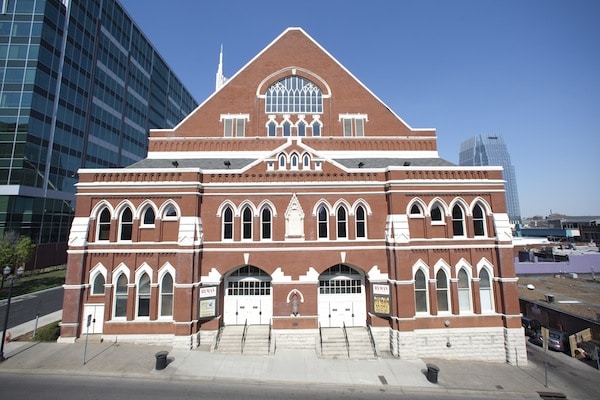
Videos by American Songwriter
It was the trash in the streets that finally got the Grand Ole Opry tossed out of War Memorial Auditorium, the radio barn dance’s fourth home since it first aired in 1925. From 1939 until 1943, the popular show had broadcast from one of Nashville’s swankiest downtown venues, directly across the street from the State Capitol, attracting throngs of country music fans every weekend. The long lines of eager concertgoers greatly outnumbered the tickets available, so invariably the streets would be crowded on Saturday night, then littered with debris on Sunday morning. That mess – along with the perception of Opry patrons as yokels and bumpkins – provoked the disdain of those Nashvillians who promoted the city as the “Athens of the South” and had no stomach for hillbilly music.
So the Opry moved across town to the Ryman Auditorium, a red-brick tabernacle on 5th Avenue near Broadway that was already out of date. It had amazing acoustics, but barely any amenities: stiff pews, no air-conditioning or ventilation, no dressing rooms. It looked like the hicks had lost that battle, but they ended up winning the war. After settling into the Ryman in June 1943, the Grand Ole Opry became more popular than ever, broadcasting to every corner of America, sparking a period of enormous musical innovation, and firmly establishing Nashville as the capital of country music.
War Memorial Auditorium remains open for business, but is merely a footnote in local lore; the Ryman, however, is known popularly as the mother church of country music, the center of a changing industry for 70 years now and a beacon for singers, songwriters, fans, and hopefuls alike. If nostalgia is the true subject of country music songs – nostalgia for better times, for lost loves, for the old homeplace – then the Ryman has become a symbol not necessarily of the past, but of our collective yearning for the past.
It’s impossible to calculate how many deals were made in the Ryman’s backstage dressing area, how many smash hits were debuted on that stage, how many careers were launched in front of those footlights, or how many fans passed through its doors and took seats in its pews. “The Ryman was the hub,” says Brenda Colladay, museum and photograph curator at the Grand Ole Opry. “You would have people listening for new songs, trying to sign someone to their publishing company, cutting record deals. There was as much history made backstage as there was onstage.”
This is the story of that history. Alternately representing both the future and the past of country music, the Ryman changed the course of Nashville songwriting over seven decades, as songwriters like Roy Acuff, Hank Williams, Johnny Cash, Kris Kristofferson, Emmylou Harris, and Marty Stuart shaped the genre song by song.

One Comment
Leave a Reply